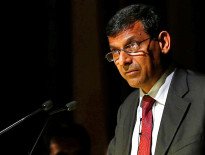Share

The CWS measures the activity status of a person on the basis of a reference period of the last 7 days preceding the date of survey. India’s overall unemployment rate comprising both urban and rural areas came down to 4.9% in 2023-2024 (July-June), from 5.1% in 2022-23, the Government said on Monday, quoting the results of annual periodic labor force survey (PLFS). Significantly, the labor force participation rate (LFPR) also saw an increase in 2023-24, to 56.4% from 54.6%. The urban LFPR rose to 50.8% from 49.4%, and rural LFPR climbed up to 58.9% from 56.7%. According to N. R. Bhanumurthy, Director at Madras School of Economics, the reduction in unemployment rate is consistent with the economic growth (8.2%) in the last fiscal year. He also noted that the joblessness rate fell despite an uptick in LFPR, which has been rising steadily since the pandemic. This was the first time the unemployment rate (UR), measured by the current weekly status (CWS), fell below the 5% mark. The first annual PLFS survey was conducted in 2017-18, when the UR was 8.7%, and it has since been on a declining trend. The CWS measures the activity status of a person on the basis of a reference period of the last 7 days preceding the date of survey. CWS is used to determine the quarterly urban unemployment rates, as well as the annual rural rates. The PLFS data is however not in agreement with data from Centre For Monitoring Indian Economy (CMIE). The methodology of the two are different too, making comparisons inaccurate.
As per CMIE, India’s unemployment rate rose to 8.05% in 2023-24 from 7.56% in 2022-23. The CMIE measures UR based on activity a person on the day of the survey or a day prior. On the other hand, as per usual status (US), the country’s overall unemployment rate remained at 3.2% in 2023-24, the same level as in the previous year. In US, the activity status of a person is determined on the basis of the reference period of the last 365 days preceding the date of survey. The CWS data shows that rural UR reduced to 4.2% in 2023-24 from 4.4% in 2022-23, and urban UR fell to 6.7% from 7%. The female UR declined marginally to 5% from 5.1%, and the urban UR dropped to 4.8% from 5.1%. The country’s overall worker population ratio (WPR) increased to 53.7% in 2023-24 from 51.8% in 2022-23. In urban areas, the WPR increased to 47.4% from 46%, and in rural areas it rose to 56.5% from 54.2%. WPR denotes the percentage of employed persons in the population. The labor force participation rate (LFPR) also saw an increase in 2023-24, to 56.4% from 54.6%. The urban LFPR rose to 50.8% from 49.4%, and rural LFPR climbed up to 58.9% from 56.7%. For the 2023-24 survey, the National Sample Survey Organization (NSSO) surveyed 101,920 households (55,796 in rural areas and 46,124 in urban areas). And the number of persons surveyed was 418,159 (2,42,546 in rural areas and 1,75,613 in urban areas). Among the persons surveyed, the total number of persons of age 15 years and above was 3,19,773 (1,80,793 in rural areas and 1,38,980 in urban areas).
Related Posts
SEARCH SMECONNECT-DESK
RECENT POST
- Finance Minister Boosts MSME Lending with Rs 1.5 Lakh Crore Increase in Public Sector Bank Targets for FY25
- Golden Visa Shake-up: Spain, Portugal, and Switzerland Phase Out Schemes While Hungary Reintroduces Residency Pathways
- Bank of Baroda Expands Branch Network and Strengthens Retail, Agriculture, MSME Focus
- PSBs to focus on accelerating pace of lending to agriculture & MSMEs
- Agricultural exports flat in first half:


